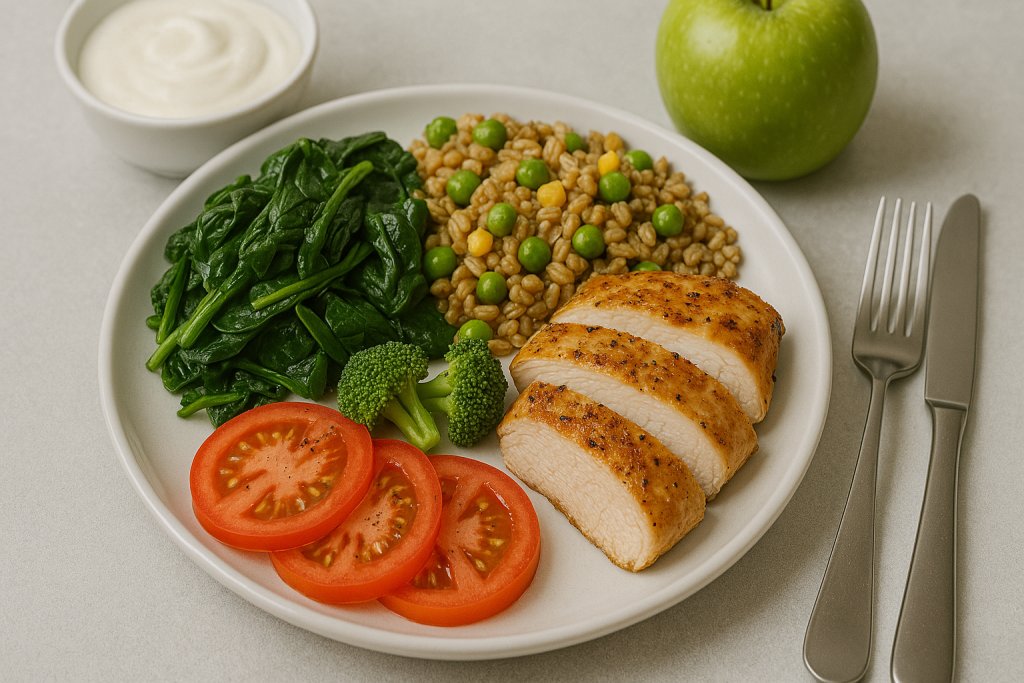Physical Address
304 North Cardinal St.
Dorchester Center, MA 02124
Physical Address
304 North Cardinal St.
Dorchester Center, MA 02124


Best Diet for Healthy Aging 2025 | Foods That Help You Reach 70+ in Good Health
Discover the top dietary patterns that support healthy aging. Learn how the Alternative Healthy Eating Index (AHEI) diet helps you reach your 70s with vitality and disease-free living.
What if you could increase your chances of living to age 70—and doing so in good health—just by changing how you eat in your 40s and 50s? According to a recent study published in Nature Medicine and reported by EatingWell, the foods you choose in midlife have a profound impact on your healthspan—the years you live free of chronic disease, physical decline, or cognitive impairment.
This isn’t just about adding years to your life—it’s about adding quality to those years. Whether you’re trying to age gracefully, avoid medication dependence, or maintain mobility into your later decades, your dietary habits today matter more than ever.
Researchers examined the long-term health outcomes of more than 100,000 participants in two of the most respected U.S. cohort studies—the Nurses’ Health Study and the Health Professionals Follow-Up Study. They tracked diets over time and compared them with the incidence of age-related conditions by the time participants reached their 70s.
They found that people who followed certain dietary patterns—especially the Alternative Healthy Eating Index (AHEI)—had up to an 86% higher chance of healthy aging. This means they lived longer without major chronic diseases like heart disease, cancer, diabetes, or neurodegenerative conditions, and with maintained physical and cognitive function.

The Alternative Healthy Eating Index is a scoring system developed by researchers at Harvard to measure how closely someone’s diet aligns with key health-promoting nutrients and foods. It’s not a fad diet—it’s a practical, balanced, and sustainable way of eating that focuses on whole, minimally processed foods.
In essence, the AHEI diet promotes plant-based, nutrient-dense eating without strict elimination. It’s flexible enough to accommodate different cultural foods and lifestyle needs, making it more sustainable long-term.

Healthy aging isn’t just about genetics. In fact, lifestyle—especially diet—plays a much bigger role than most people realize. Here’s how the AHEI diet helps your body stay resilient as you age:
Foods like berries, leafy greens, nuts, and fatty fish are packed with antioxidants and anti-inflammatory compounds. These help prevent cellular damage that leads to aging-related diseases like Alzheimer’s, arthritis, and heart disease.
A fiber-rich diet from whole grains and legumes fosters a thriving gut microbiome. A healthy gut helps regulate immune responses, reduce systemic inflammation, and even supports mood and brain function.
Long-chain omega-3 fats from fatty fish, along with polyphenols from fruits and vegetables, have been linked to slower cognitive decline and a reduced risk of dementia.
The AHEI diet helps manage blood sugar, cholesterol, and blood pressure—three key biomarkers that influence your risk for type 2 diabetes, cardiovascular disease, and stroke.
Want to know what a day of eating might look like on this longevity-promoting diet? Here’s a simple breakdown:
Breakfast
Lunch
Snack
Dinner
Dessert

While this diet was studied primarily in middle-aged adults aiming for healthy aging, it’s beneficial for everyone at any stage of life. Teens, young adults, and seniors alike can all benefit from nutrient-dense, anti-inflammatory, fiber-rich eating.
The best part? You don’t need to follow the AHEI perfectly. The data shows that gradual improvement, even partial adherence, leads to measurable benefits. If you can swap sugary drinks for water, add a veggie to every meal, and cook more at home, you’re already moving in the right direction.
The choices you make today can dramatically shape how you age tomorrow. The Alternative Healthy Eating Index diet offers a realistic, research-backed path toward living longer and better. It’s not about perfection—it’s about consistency and balance.
So, if you’re aiming to reach your 70s (and beyond) feeling strong, sharp, and energized, the science is clear: start with your plate.